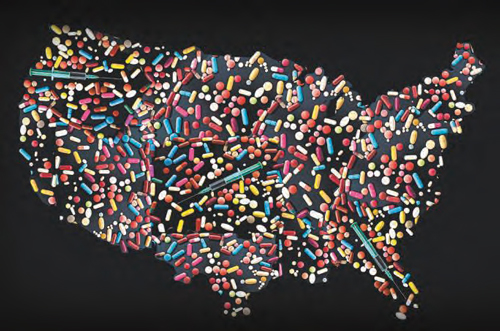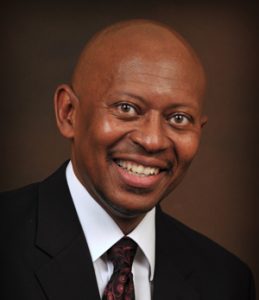By Issac L. Boose, M. Ed, LPC-S, LMFT, ICAADC

The Opioid Crisis
Prescription opioid drug use and overdose deaths have reached shocking levels throughout the United States. Media reports televising individuals at the lowest point of their addiction have generated a great deal of discussion about what can be done to solve this problem. In the meantime, treatment facilities, hospital emergency departments, public health agencies, and law enforcement are engaged in a continual process to come up with ways to address this ongoing issue.
According to the CDC, the U.S. is in the midst of an opioid overdose epidemic. Opioids, including prescription opioids and heroin, killed more than 33,000 people in 2015, more than any year on record. Nearly half of all opioid overdose deaths involve a prescription opioid. Ninety-one Americans die every day from an opioid overdose and since 1999, the amount of prescription opioids like oxycodone, hydrocodone, and methadone sold in the U.S. has nearly quadrupled, yet there has not been an overall change in the amount of pain that Americans report.
Studies have shown that the U.S. uses 80% of the world’s supply of opioid drugs and has less than 5% of the world’s population. These statistics are staggering and can cause one to wonder why do the citizens in our country consume opioids in such large amounts.
Media reports and social media postings often leave us with more questions than answers. There are two stories about opioid addiction that really stand out for me. The first is the story of the man and woman who were passed out in their car with the woman’s 4-year-old child in the back seat after a suspected heroin overdose. The police of East Liverpool, Ohio, shared on Facebook the images of the couple. This occurred in September 2016. The second story is of the airline pilot and his wife who were found dead in their southwest Ohio home by their children in March 2017.
These two tragic stories grabbed my attention because they highlight the loss of control that accompanies addiction. I also wonder if their pain was physical or emotional. We know that individuals respond to physical pain in different ways. Some individuals have a low threshold for pain and these individuals may believe they need more pain medication. When used long-term, opiates can actually change the pain threshold in some individuals. The condition is called opioid-induced hyperalgesia and it causes some individuals to become more sensitive to pain. There are also individuals who report they used opioid painkillers because they were experiencing emotional pain.
The present opioid epidemic has forced us to reexamine the way we think about drugs of addiction since many people find they have become addicted to opioids that were prescribed to treat legitimate pain. In the past, many of us had pretty clear beliefs about where harmful drugs were coming from and the people who were using them. We could be fairly certain that the drugs that were harming people were coming from illegal sources, but this is no longer the case.
According to the CDC, heroin-related deaths more than tripled between 2010 and 2015, with 12,989 heroin deaths in 2015. The largest increase in overdose deaths from 2014 (5,544 deaths) to 2015 (9,580 deaths) was for those involving synthetic opioids. One of these synthetic opioids illegally made fentanyl, drove the increase. It was often mixed with heroin and/or cocaine as a combination product—with or without the user’s knowledge.
The fentanyl that is being mixed in with the heroin is actually 100 times more potent than morphine. There is a progression from prescription painkillers purchased from a pharmacy to fentanyl-laced heroin. When an individual can no longer get a prescription from their doctor they then may move to painkillers stolen from the medicine cabinet of a friend or loved one. When that supply runs out, the individual may turn to buying pills on the street. When the pills on the street become too expensive for the individual, the dealer will usually offer the cheaper alternative—heroin. At this point, it is very likely the heroin has been mixed with other drugs and there is a strong chance the other drug is fentanyl.
The solution to the opioid crisis has caused many organizations to rethink their day-to-day operations. Facilities providing treatment for addiction are reworking their curriculum to include education about the dangers of overdoses from the more potent drugs that are being sold on the streets. Hospital emergency departments have begun to institute policies to limit the amount of painkillers they prescribe. In Ohio, the Stark County Coroner’s Office was so overwhelmed with fatal opioid overdoses they had to bring in an emergency portable morgue. Some law enforcement agencies across the country are being instructed in the proper use of Naloxone, a medication used to block the effects of opioids, for fear of officers or their canine companions coming in contact with the powerful drug, fentanyl, and overdosing.
The prescription opioid crisis has become so widespread that it has triggered responses from public officials. Mississippi’s Attorney General, Jim Hood, is suing eight pharmaceutical companies for misrepresentation of their opioid painkillers. Ohio’s Attorney General, Mike DeWine, is suing five pharmaceutical companies stating they engaged in fraudulent marketing and they knowingly understood the risks and benefits of prescription opioids, which fueled Ohio’s opioid epidemic.
Many have identified the current problem of opioid overdoses as tragic, a crisis, as well as an epidemic. I cannot disagree with any of these descriptors, as I believe they describe the situation well. I also believe there is a solution to every problem and when our combined efforts become more focused we will begin to see positive changes in our communities and our entire society.

Issac L. Boose presently works as the Director of Pine Grove’s Next Step program, which treats men with chemical addiction. His experience includes working with couples, family, group, and individual therapy.